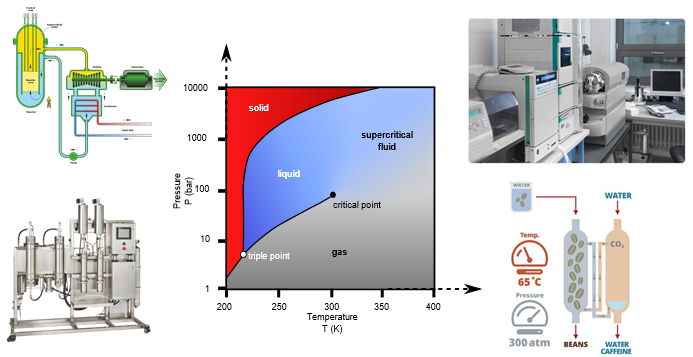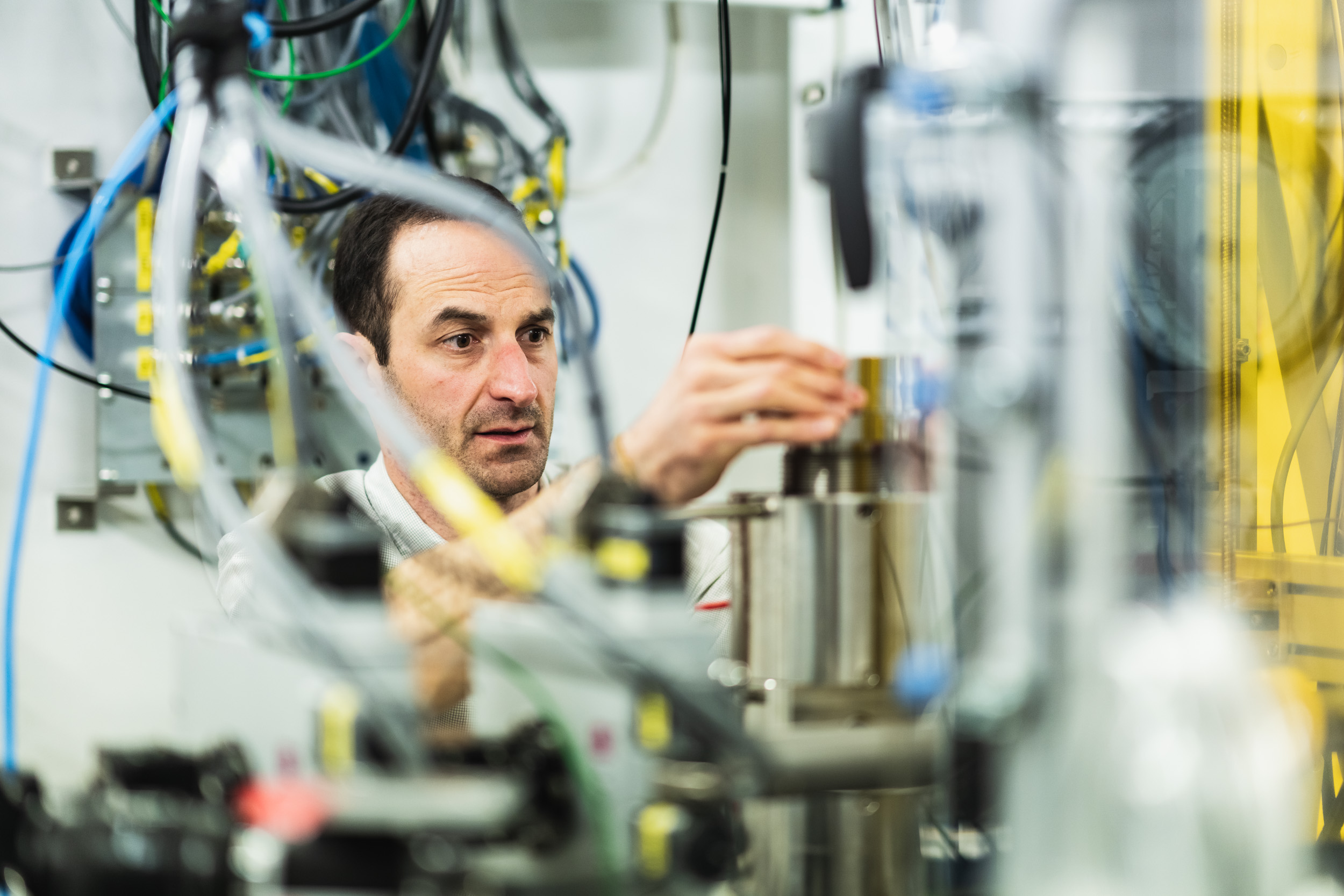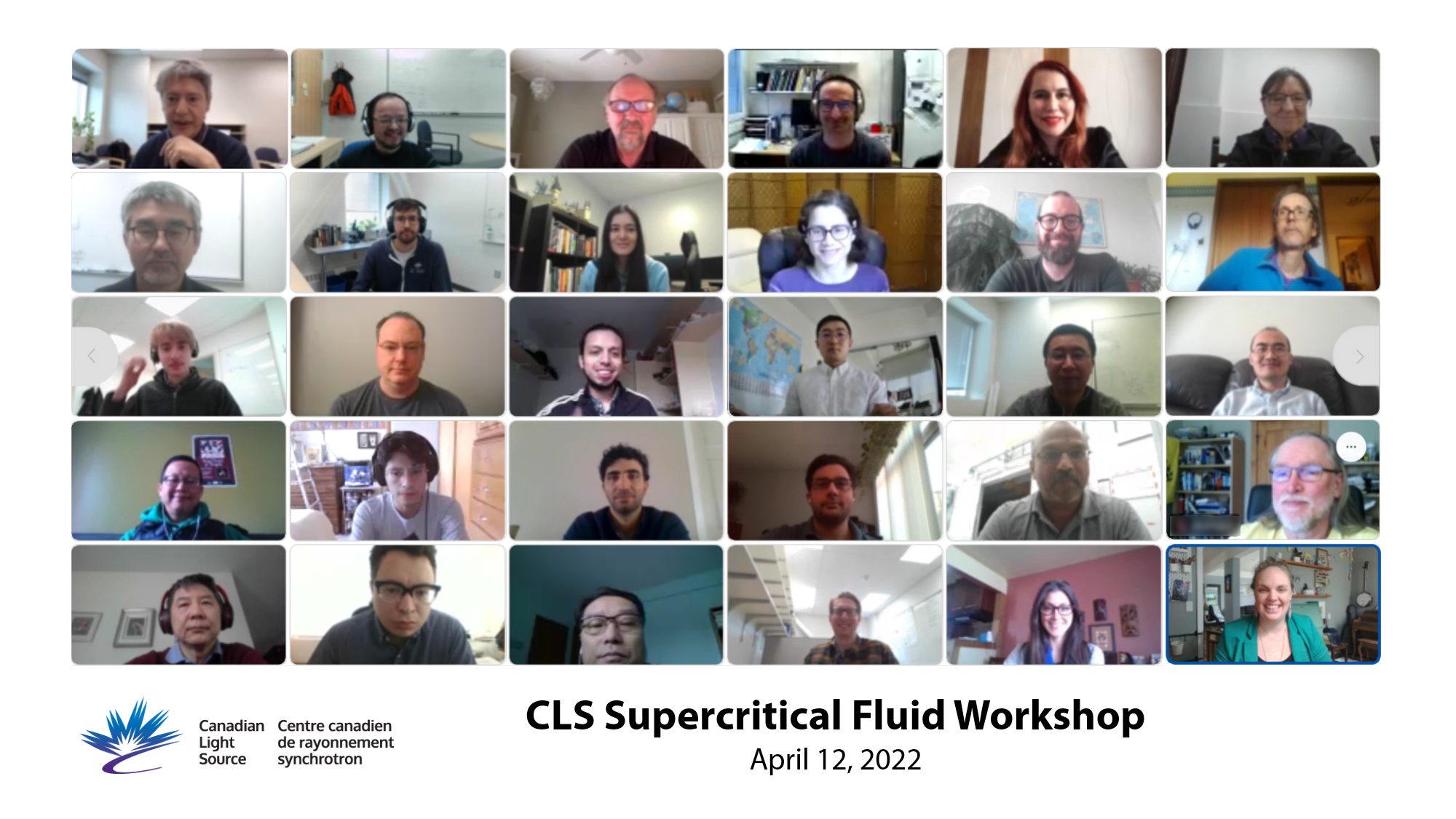CLS Supercritical Fluid Workshop
Experimental setups for research under high temperature and high-pressure conditions
April 12, 2022
A supercritical fluid (SCF) is any substance at a temperature and pressure above its critical point.
Neither a liquid nor a gas, supercritical fluids possess the best properties of both states. They can effuse through porous solids like a gas, overcoming the mass transfer limitations that slow liquid transport. On the other hand, SCF are far superior to gases in their ability to dissolve materials, similar to liquids. By changing the pressure and temperature of the fluid, the properties can be "tuned" to be more liquid-like or more gas-like. The fascinating properties of SCF have found many novel industrial applications. For example, carbon dioxide and water are the most commonly used supercritical fluids and they are often used for decaffeination and power generation, respectively. Applications using SCF are also widely used in the pharmaceutical industry.
At the Canadian Light Source, we endeavor to develop in-situ / operando experimental setups for research under high temperature and high-pressure conditions. In this workshop, we will have experts talking about their SCF experimental devices and research. The event will benefit both CLS and potential user communities.
April 12, 2022
11am-2pm CST (local Saskatoon time)
| Time | Focus |
| 11:00 CST | Welcome from Feizhou He and Gianluigi Botton, CLS |
| 11:10 CST | Denis Testemale, French National Centre for Scientific Research In situ spectroscopy of hydrothermal fluids: what can we learn with autoclaves and photons? |
| 12:10 CST | Andrew V.G. Chizmeshya, School of Molecular Sciences, Arizona State University Moissanite Microreactor for Supercritical Fluid Studies: Recent Advances and Applications in Geological and Materials Science |
| 13:10 CST | Gisele Azimi, Canada Research Chair, University of Toronto Application of supercritical fluid extraction for recovery of rare earth elements from secondary resources |

About the Speakers
Andrew V.G. Chizmeshya | Arizona State University
Faculty, School of Molecular Sciences
Gisele Azimi | University of Toronto
Canada Research Chair in Urban Mining Innovations
Dr. Gisele Azimi is an Associate Professor and Canada Research Chair in Urban Mining Innovations. She is jointly appointed by the Departments of Chemical Engineering & Applied Chemistry and Materials Science & Engineering at the University of Toronto. She is also a registered Professional Engineer in Ontario. In her research program, she strives to enable sustainability in terms of energy and global warming as well as materials criticality. The research program covers three themes: 1) Energy storage and electrochemistry with a focus on the development of electrolytic processes for production of ultra-pure metals as well as the development of a new generations of rechargeable batteries that are cost-effective, high-performance, safe, and made of earth abundant materials (aluminum batteries); 2) Extractive metallurgy and Urban mining with a focus on recycling and recovering strategic materials from primary and secondary resources such as ionic clays, Waste Electrical and Electronic Equipment (WEEE) or industrial solid wastes; and 3) Advanced materials with a focus on designing innovative materials to enable the first two themes, e.g., novel 2D heterostructures for the cathode of Al battery or scale-phobic surfaces to mitigate precipitation fouling in extractive metallurgy. She received her Ph.D. in 2010 from the department of Chemical Engineering and Applied Chemistry at the University of Toronto. Before returning to the University of Toronto as a faculty member in 2014, she completed two postdoctoral appointments at MIT in the departments of Materials Science and Engineering and Mechanical Engineering. She has been recognized with several young researcher awards for excellence in Research, Teaching, and Leadership, namely “Canada Research Chair (Tier 2)”, “Emerging Leaders of Chemical Engineering (Canadian Society for Chemical Engineering)”, “The 2020 CSChE Innovation Award”, “The 2020 Canadian Journal of Chemical Engineering Lectureship Award”, “The 2020 TMS Young Leaders Award (Minerals, Metals, and Materials Society (TMS))”, “McCharles Prize for Early Career Research Distinction”, “FASE Early Career Teaching Award”, and “Impact Teacher of the Year Award”.
Application of supercritical fluid extraction for recovery of rare earth elements from secondary resources
Dr. Gisele Azimi
Associate Professor, Chemical Engineering and Applied Chemistry Department, University of Toronto
Canada Research Chair in Urban Mining Innovations
There is a significant global push towards recycling of waste electrical and electronic equipment (WEEE) to enable the circular economy. Conventional recycling processes rely on pyrometallurgy or hydrometallurgy. Pyrometallurgical recycling typically requires high energy consumption and reaction temperature and generates greenhouse gas emissions. Hydrometallurgical processes are the preferred waste-valorization alternatives because of their adaptability to resource scale and relatively low energy consumption. However, these techniques also face the drawback of being reagent intensive, often requiring the large consumption of strong acids and organic solvents as well as the production of secondary streams of potentially hazardous wastes. An emerging green separation technology is supercritical fluid extraction (SCFE) that can recycle secondary resources at a low cost, with low energy consumption and high recovery efficiency. Major commercial SCFE processes have been focused on the energy industry, including direct liquefaction of coal and enhanced oil recovery from petroleum reservoirs as well as the chemical industry, including food and pharmaceuticals Supercritical fluids are desirable for extraction processes because of their combination of gas-like and liquid-like properties, tuneable properties, and simple separation by phase transformation. Among supercritical fluids, supercritical carbon dioxide (sc-CO2) has shown promising results for the extraction of rare earth elements (REEs) from synthetic feeds and as well as secondary feeds. In comparison with hydrometallurgical processes, SCFE does not generate hazardous wastewater and acid fumes. The CO2 solvent can be easily separated from products through depressurization and recycled back to the process. In this talk, the application of sc-CO2 for the recovery of REEs from waste neodymium iron boron magnet and fluorescent lamps will be presented.
Denis Testemale | French National Centre for Scientific Research
Institut Néel, CNRS, Univ. Grenoble Alpes
FAME, FAME-UHD beamlines

Denis Testemale graduated in 2000 both as an engineer in Physics (INPG University, Grenoble, France) and as a postgraduate in "Physics of Matter and Radiation" (University of Grenoble, France). This background in engineering, coupled with an accute interest in more fundamental scientific topics, led his choice to orient his research career towards large scale synchrotron facilities.
First Denis conducted his PhD at the Laboratoire de Cristallographie (CNRS, Grenoble, France) and on the french x-ray absorption beamline FAME at ESRF, to study local molecular structures in supercritical solutions, and their relationship with macroscopic properties of fluids by use of X-ray absorption spectroscopy, Small Angle X-ray Scattering and X-ray Raman scattering. At the core of this research field was the development of a novel autoclave setup : this equipment allowed for all kind of spectroscopic and scattering x-ray measurements, and is still today the cornerstone of the metallogeny activity at the FAME beamline. The same topics were investigated during his first post-doc at the Swiss-Norvegian beamline at ESRF.
Then Denis started to build collaborations in the Earth Sciences community to apply these methods to metallogeny and bio-geochemistry topics where speciation and solubility of metals in hydrothermal fluids are essential knowledge ; first through a post-doctoral position at the South Australian Museum and Adelaide University (Metals in Solutions group, Pr. J. Brugger), and then when in 2007 Denis obtained a CNRS permanent position as a junior scientist at Institut Néel (Grenoble), and beamline scientist at the FAME beamline at ESRF.
Today, Denis Testemale’s research still focusses on metal speciation in hydrothermal fluids, in the context of geochemical studies, by methods of XAS and Raman spectroscopy, but also recently opened to hydrothermal synthesis of nanoparticles. The technological development of autoclaves also remains central to his activity, as well as the user support at FAME and FAME-UHD beamlines at ESRF, in particular to provide access of these unique high-pressure installations to the international research community.
In situ spectroscopy of hydrothermal fluids: what can we learn with autoclaves and photons?
Testemale Denisa,b, Lahera Ericb,c, Prat Alaina, Delnet Williamb,c, Goujon Célinea, Douillet Sabinea, Hazemann Jean-Louisa,b
a. Institut Néel, CNRS, Univ. Grenoble Alpes, F-38000, Grenoble, France.
b. FAME, FAME-UHD beamlines, ESRF, Grenoble, France.
c. OSUG, Saint-Martin d'Hères, France.
One of the topics of research on hydrothermal fluids is the study of chemical reactions and equilibria for which the description of metal speciation is essential. This type of studies have applications in various scientific fields (metallogeny, physical-chemistry, hydrothermal synthesis, etc.). The near impossibility of using quenching methods, coupled with the transient nature of some chemical species, requires in situ spectroscopic techniques. In this context we have developed over the last 20 years autoclaves dedicated to this type of in situ measurements, and made them available to the scientific community on the FAME and FAME-UHD beamlines at ESRF [1-3]. We will present here the X-ray absorption spectroscopic methods that have been developed and that benefit from these devices, as well as the advantages and disadvantages of using autoclaves in the context of hydrothermal fluids, through some examples. We will mainly describe the technological solutions adopted and the technological barriers that still exist. Some results of Small Angle X-ray Scattering and X-ray Raman scattering on supercritical solutions will briefly be shown. Finally, we will present the recent adaptations of our devices on laboratory x-ray sources at the Néel Institute: Raman [4] and X-ray micro-source.
[1] Testemale, D., Argoud, R., Geaymond, O., Hazemann, J.-L. High pressure/high temperature cell for x-ray absorption and scattering techniques. Review of Scientific Instruments 76, 043905 (2005)
[2] Testemale, D., Prat, A., Lahera, E., Hazemann, J.-L. Novel high-pressure windows made of glass-like carbon for x-ray analysis. Review of Scientific Instruments 87, 075115 (2016)
[3] Bruyère, R., Prat, A., Goujon, C., Hazemann, J.L. A new pressure regulation device using high pressure isolation valves. Journal of Physics: Conference Series 121, 122003 (2008).
[4] Louvel, M., Bordage, A., Da Silva-Cadoux, C., Testemale, D., Lahera, E., Del Net, W., Geaymond, O., Dubessy, J., Argoud, R., Hazemann, J.-L. A high-pressure high-temperature setup for in situ Raman spectroscopy of supercritical fluids. Journal of Molecular Liquids 205, 54–60 (2015)
Thank you to all those who attended this workshop!

